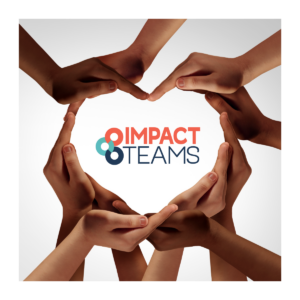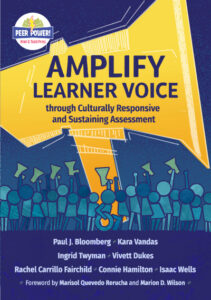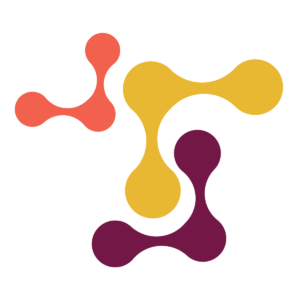 Impact Teams-PLCs partner with students to bolster their agency, encouraging them to take an active part in their learning journey. Learner agency involves students making choices, setting goals, reflecting on their learning, and assuming responsibility for their learning. It highlights the significance of self-empowerment, enabling students to understand their learning processes, which fosters a deeper sense of ownership and motivation.
Impact Teams-PLCs partner with students to bolster their agency, encouraging them to take an active part in their learning journey. Learner agency involves students making choices, setting goals, reflecting on their learning, and assuming responsibility for their learning. It highlights the significance of self-empowerment, enabling students to understand their learning processes, which fosters a deeper sense of ownership and motivation.
If we want to know our students well, then we need to understand how they perceive themselves as learners. This perception, referred to as learner identity, encompasses how students view their abilities, potential, and place within various subjects. A person’s learner identity in any particular subject includes their strengths, interests, cultural background, and learning preferences. By delving into these aspects, Impact Teams-PLCs can personalize their approaches to be better partners, better support, and engage each student authentically, fostering a more inclusive and effective learning environment.
Authentic student engagement is when students are immersed in work that is meaningful or enjoyable to them, while compliance is when students do what is expected of them without engaging their minds.
Authentic Engagement to Foster Self-Empowerment
Understanding how students perceive themselves as learners (learner identity) is crucial for fostering an inclusive and effective learning environment and critical for authentic student engagement. Authentic student engagement is when students are immersed in work that is meaningful or enjoyable to them, while compliance is when students do what is expected of them without engaging their minds. In addition, the concept of learner identity emphasizes the importance of student self-empowerment to influence what and how they learn, fostering a sense of ownership and motivation in their learning journey. However, learner identity does not exist in isolation; it is deeply intertwined with cultural identity, shaping and being shaped by it.
What is Learner Identity?
Learner identity refers to a student’s self-concept as a learner, including their confidence, motivation, and attitudes toward different subjects. This identity is not monolithic but rather contextualized to various domains such as math, reading, history, and STEM, etc. For instance, a student might have a strong math identity, seeing themselves as competent and capable in mathematical tasks, while simultaneously struggling with their reading identity, and feeling less confident in their literacy skills.
The Intersection of Cultural and Learner Identity
Cultural identity plays a pivotal role in shaping learner identity. It encompasses the beliefs, values, traditions, and social norms that students bring with them into the classroom. These cultural influences affect how students view education, their role within it, and their potential for success. For example, a student from a community that values collaboration may view learning as a communal effort, influencing their engagement and collaboration in group activities. Conversely, a student whose cultural background emphasizes individual accomplishment might approach learning with a competitive mindset, striving for personal success.
Recognizing and integrating students’ cultural backgrounds into the curriculum helps to make learning more relevant and engaging, promotes a sense of belonging, and enhances students’ self-esteem and motivation. It also allows educators to address and bridge cultural gaps, reducing biases and stereotypes, and ensuring that all students have equitable access to learning opportunities. By embracing cultural diversity, educators can create a richer, more dynamic classroom experience that prepares students to thrive in a multicultural society.
Understanding and nurturing learner identity, grounded in their cultural identity, is fundamental to creating a learning space where all students can thrive.
Understanding Learner Identity
Recognizing and understanding how students perceive themselves as learners is essential for several reasons:
- Personalized Learning: Tailoring instruction to meet students’ individual needs becomes more effective when educators understand students’ learner identities. This personalization can lead to increased engagement, motivation, and academic success.
- Building Confidence: Students who see themselves positively in one subject can leverage that confidence across other areas. For instance, a student with a strong reading identity might apply their analytical skills to improve their math identity, given the right support and encouragement.
- Inclusive Education: An awareness of cultural influences on learner identity helps create an inclusive classroom environment. Educators can design culturally responsive teaching strategies that validate and incorporate students’ cultural backgrounds, fostering a sense of belonging and respect.
- Holistic Development: Understanding learner identity supports students’ holistic development. It encourages educators to consider emotional, social, and cognitive factors, creating a more comprehensive approach to education.
Strategies for Supporting Learner Identity
- Culturally Responsive-Sustaining Pedagogy: Implement teaching practices that recognize and value students’ cultural backgrounds. This can include integrating diverse perspectives into the curriculum, using culturally relevant examples, and promoting an inclusive classroom environment.
- Positive Reinforcement: Encourage and celebrate students’ achievements in various subjects. Highlight their strengths and provide constructive feedback to build their confidence and resilience.
- Reflective Practices: Encourage students to reflect on their learning experiences and identities. Reflection helps them recognize their growth, understand their learning processes, and set personal goals.
- Family and Community Engagement: Involve families and communities in the educational process. Their support and involvement can reinforce positive learner identities and cultural pride.
- Mentorship and Role Models: Provide students with access to mentors and role models who share similar cultural backgrounds or have overcome similar challenges. Seeing successful individuals who they can see themselves in can inspire students to develop a positive learner identity.
Understanding and nurturing learner identity, grounded in their cultural identity, is fundamental to creating a learning space where all students can thrive. By recognizing the unique ways in which students perceive themselves as learners and the cultural contexts that shape these perceptions, educators can foster a more inclusive, supportive, and effective learning experience. As we strive to develop assessment-capable, or self-empowered, learners, it is imperative to consider the holistic development of each student, acknowledging and valuing their diverse identities and experiences.
Gathering evidence about students’ learner identities across different subjects involves using a variety of qualitative and quantitative methods.
Knowing Students: How to Gather Evidence
Gathering evidence about students’ learner identities across different subjects involves using a variety of qualitative and quantitative methods. Here are several strategies educators can employ to gain a comprehensive understanding of how students perceive themselves as learners in different domains:
1. Student Surveys and Questionnaires
Surveys and questionnaires can be designed to capture students’ self-perceptions, attitudes, and confidence levels in various subjects. These instruments can include:
- Likert-scale questions: To assess students’ confidence, interest, and perceived competence in math, reading, and science.
- Open-ended questions: To gather more detailed insights into students’ thoughts and feelings about their learning experiences.
Survey Ideas: Examples surveys. You may want to follow up with interviews or focus groups. All of these surveys could be adapted to fit any subject area.
2. Interviews and Focus Groups
Conducting one-on-one interviews or focus group discussions with students can reveal deeper insights into their learner identities. These conversations can explore:
- Personal experiences: In different subjects, including what they enjoy or dislike.
- Self-efficacy beliefs: How do they see their abilities and potential in various domains?
- Influences and motivations: What impacts their learning behaviors and attitudes?
Possible Questions: Adapt these questions to get to know your learners. You can also use AI to create questions aligned to any content area that you teach.
- What do you love to learn about and why?
- Describe what it means to be a learner in [subject].
- Describe the characteristics of a [subject] learner.
- How do you feel about learning [subject]?
- How do you think of yourself regarding health and fitness? (PE Example)
- Describe the relationship you have with the learning [subject].
- How do you learn best? How do students learn best at our school?
- What do you like to learn about [subject]? and How do you best learn [subject]?
- What helps you learn [subject]? What gets in the way of your learning? Why?
- What is your role as a [subject] learner in the classroom?
- What happens in class when students make mistakes? and What advice do you give to learners who make mistakes?
- What do you do when you are confused, challenged, or stuck?
3. Reflective Journals and Learning Logs
Encouraging students to maintain reflective journals or learning logs allows them to express their thoughts, challenges, and achievements in their own words. Prompts can guide students to reflect on:
- Successes and struggles: In specific subjects, detail what they found easy or difficult.
- Strategies and goals: Used for learning and how they plan to improve or maintain their performance.
- Emotional responses: To learning experiences, which can provide insight into their learner identity.
4. Observations and Anecdotal Records
Teachers can gather evidence through systematic observations of students during class activities, group work, and independent study. Key aspects to observe include:
- Participation and engagement: Levels in different subjects.
- Peer interactions: How students collaborate and communicate with others.
- Behavioral patterns: Such as persistence, seeking help, and reactions to challenges.
5. Student Portfolios
Portfolios allow students to collect and showcase their work across various subjects. Reviewing these portfolios provides a window into:
- Progress and achievements: Over time, highlighting strengths and areas for growth.
- Reflections and self-assessments: Included in the portfolios, which offer insights into how students view their learning journey.
6. Analysis of Student Work
Examining students’ work across subjects can provide evidence of their learner identity. This involves:
- Quality and complexity: Of the work produced in different subjects.
- Consistency and effort: Demonstrated in assignments and projects.
- Feedback and revisions: Showing how students respond to critique and improve their work.
7. Peer Feedback
Incorporating peer feedback mechanisms can help students gain insights into their learning identities. Peer assessments can reveal:
- Perceptions of strengths and weaknesses: From classmates’ perspectives.
- Collaborative skills: And how students are viewed in group settings.
8. Teacher-Student Conferences
Regular, informal conferences between teachers and students provide opportunities for personalized feedback and discussion about learner identity. Topics to cover might include:
- Academic goals: And progress in various subjects.
- Personal reflections: On learning experiences and self-perceptions.
- Support and strategies: Needed to enhance learning and confidence.
Gathering evidence about students’ learner identities across different subjects requires a multi-faceted approach. By combining surveys, reflections, observations, portfolios, interviews, peer feedback, and teacher-student conferences, educators can develop a holistic understanding of each student’s self-perception as a learner. This comprehensive view enables tailored support and interventions that foster positive learner identities and academic success across all subject areas.
Analyzing Qualitative Evidence
Impact Teams-PLCs analyze qualitative evidence, such as student voice data or student perception data, through a collaborative and reflective process using the Impact Teams Evidence-Analysis-Action Protocol. This involves gathering data from various sources, such as surveys, interviews, and focus groups, and then engaging in discussions to interpret the insights. Teams look for patterns, themes, and key insights that reveal students’ experiences, perceptions, and needs. They use this analysis to inform their collective actions, aiming to create a more responsive and engaging learning environment. By prioritizing student voice, teacher teams ensure that their practices are aligned with the actual experiences and needs of their students, fostering a more inclusive and effective educational setting.
Knowing Our Students Well
In the heart of every classroom beats the unique rhythm of each student’s learning journey. To truly know our students is to understand the intricate patterns of their learning identities. As teachers, we hold the profound responsibility and privilege to gather evidence that goes beyond mere grades and test scores. This evidence tells the story of who our students are as learners in and beyond the subjects we teach grounded in their cultural identity.
When we delve into this evidence, we uncover their strengths, their challenges, their passions, and their potential. We see the sparks of curiosity in their eyes, the moments of struggle, and the triumphs of understanding. This holistic view empowers us to tailor our teaching, to create environments where every student feels seen, valued, and capable of achieving greatness.
By committing to this deeper understanding, we foster a culture of trust and respect, where students are encouraged to take risks, to ask questions, and to grow. We become not just teachers, but mentors, partners, guides, and allies in their learning journey. Our classrooms transform into vibrant communities of learners, where each student’s identity is celebrated and their learning experiences are enriched.
In knowing our students well, we light the path to their success. We inspire them to believe in their abilities, to embrace challenges, and to become lifelong learners. Let us embrace this mission with passion and dedication, knowing that the impact of our efforts will resonate far beyond the walls of our classrooms. Together, we can unlock the limitless potential within each student, guiding them toward a future filled with promise and possibility with a mission of advancing learner agency.
Read More
 Amplify Learner Voice through Culturally Responsive Assessment by Bloomberg, Vandas, Tyman, Hamilton, Dukes, Wells, and Carrillo-Fairchild
Amplify Learner Voice through Culturally Responsive Assessment by Bloomberg, Vandas, Tyman, Hamilton, Dukes, Wells, and Carrillo-Fairchild
This book highlights strategies for engaging students in the assessment process, promoting equity, and developing learning dispositions through culturally responsive formative assessment practices.
The Learner Power Approach by Guy Claxton and Graham Powell
This book explores how to develop resilient, resourceful, and reflective learners by cultivating their learning dispositions.
Dispositions: Reframing Teaching and Learning by Arthur L. Costa and Bena Kallick
This book provides insights into how to foster and assess learning dispositions in students, emphasizing habits of mind and reflective practices.
Street Data: A Next-Generation Model for Equity, Pedagogy, and School Transformation by Shane Safir and Jamila Dugan
This book focuses on using qualitative data to understand and enhance students’ learning experiences, emphasizing culturally responsive teaching and equity.




